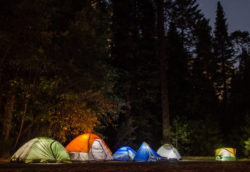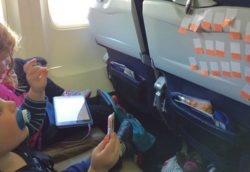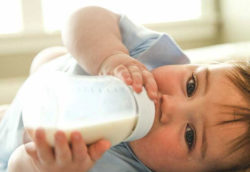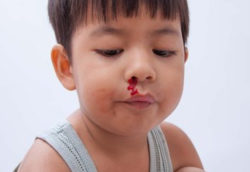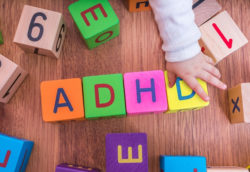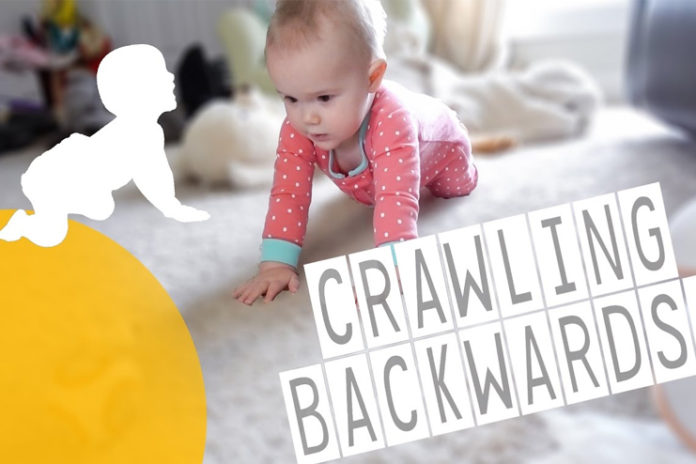Crawling is one of the successful milestones of your baby. Babies have their own developmental timeline. Is your about to crawl? Then, you must know about backward crawling in your child.
Your baby may start to shuffle forward and backward before learning to start crawling. Babies develop crawling after many efforts. They usually develop their own path to complete crawling as per their convenient. The crawling techniques may vary from baby to baby.
This article discusses the stages in backward crawling. It also discusses the concept of backward crawling and the techniques to combat backward crawling.
When Do Babies Start Crawling?
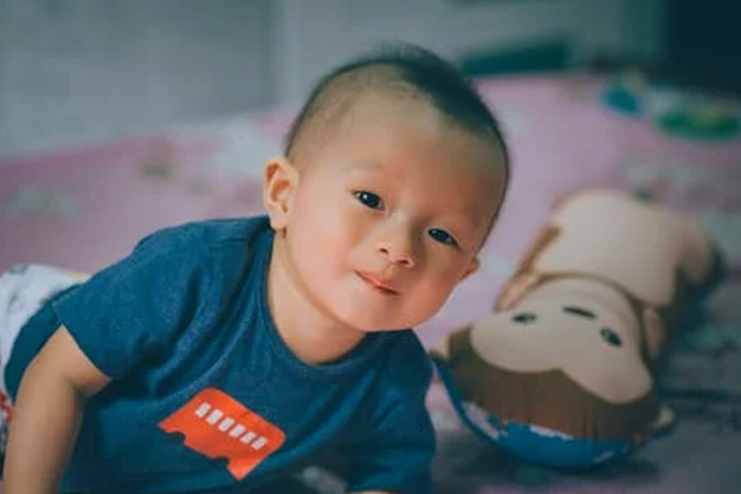 Babies start mastering crawling at the age of 6 months. Some babies start little bit earlier than this and some others start late. Along with the period they start crawling, the way they crawl also differ from baby to baby.
Babies start mastering crawling at the age of 6 months. Some babies start little bit earlier than this and some others start late. Along with the period they start crawling, the way they crawl also differ from baby to baby.
Crawling is the first step that child develops towards the mobility. Crawling stage offers parents very extreme challenges. Babies are to be observed from all the sides when they start crawling.
Stages Of Baby Crawling:
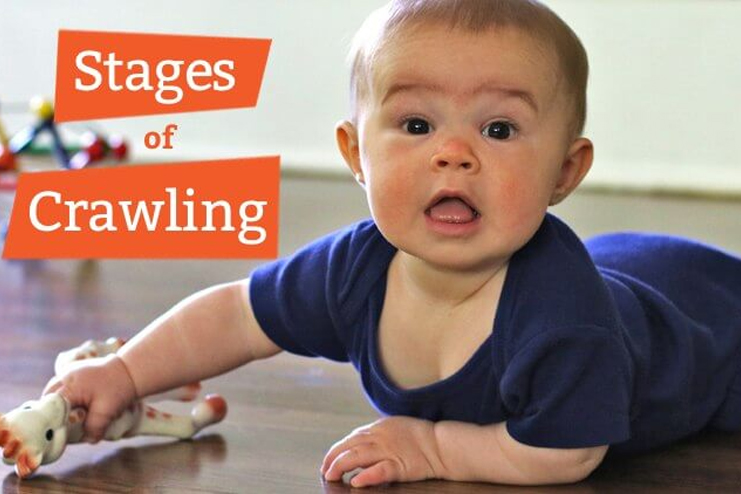
There are various stages that baby go through before they become professional crawler:
Stage 1: Rollover:
Babies lie on their backs till the age of 3 months. They develop certain reflexes to flip from back to front. This is the initial stage that your baby develops in their way to crawling. Babies develop this reflex at the age of 4 months.
Stage 2: Swimming like movements:
This is the second stage in the development of crawling. In this phase babies try to move their hands and legs just like the swimmer. Babies often turn frustrated in this phase as their movements do not allow them to move forward and catch the things in front of them.
Stage 3: Babies start enjoying on their tummy
Babies start enjoying the time on their tummy after a rigorous sleep on their backs. After the tremendous practice on their tummy babies may feel it more comfortable after some days. They enjoy seeing the toys and playing on their tummy.
Make sure that not to allow your baby to lie on their tummy soon after feeding.
Stage 4: Babies start finding their knees
After the joyful tummy time babies move into the stage where they recognize the use of their knees. They start folding their knees while on the tummy. They initially start raising their back with the toes touching the ground. Slowly they learn to stabilize on their folded knees
Stage 5: One hand One leg shuffling
Babies learn to use one hand and the alternate leg in the shuffling manner like a soldier. This stage is a sign that they are very closer to be a professional crawler. The one hand one leg movements allow the baby to move forward and catch the thigs.
Stage 6: Horse posture
At this stage babies completely learn to raise their tummy taking the support of the arms and legs. Babies are likely to carry their weight through the hands.
Stage 7: Rock back and forth
When babies make themselves comfortable with the horse posture they rock back and forth. This stage uplifts the baby’s zeal to crawl.
Stage 8: Pushups
Babies develop back-forth movements and pushups in the horse posture. This stage is the ready to go stage of the baby to crawl.
Stage 9: Ready to go
Baby starts perfect crawling movements and slips off sometimes. But, they do not regret to crawl. For the little slip offs, they can get up on their own and start to crawl.
Stage 10: Professional Crawler
Babies become professional crawler with the little practice and support.
Babies had rigorous attempts and they successfully reached their destination. Now it is your turn to protect your baby and prevent your baby from grabbing and spilling the things. Your little one is now ready to make you run.
Help your baby while they move through the above stages till they become professional crawler.
Why Do Babies Crawl Backwards?
Crawling is the part of baby’s response to gross motor development. It refers to the development of the big muscle that allows the baby to sit, walk, and run. The gross motor skills demand the proper functioning of the nerves, muscles, and the bones to work.
Babies find the easiest way while they start to learn the crawling. Babies find commando crawling and the backward crawling more comfortable for many reasons:
Stronger arms: If the baby feels more comfortable and stronger on the arms than on the legs, they tend to crawl or push themselves backwards.
Underdeveloped lower part of the baby: At times, babies develop upper parts of their body faster than the lower parts of their body. Lower parts of the body may take some time to develop. The immature lower parts of the body may make the baby to crawl backwards.
Once the babies have stronger arms and legs, they start crawling forward. It is fine even if they skip crawling forward. Crawling backwards does not mean that your baby has not reached milestone. Developmental achievements may vary from baby to baby.
Ways to Help Baby To Crawl Forward Instead of Backwards:
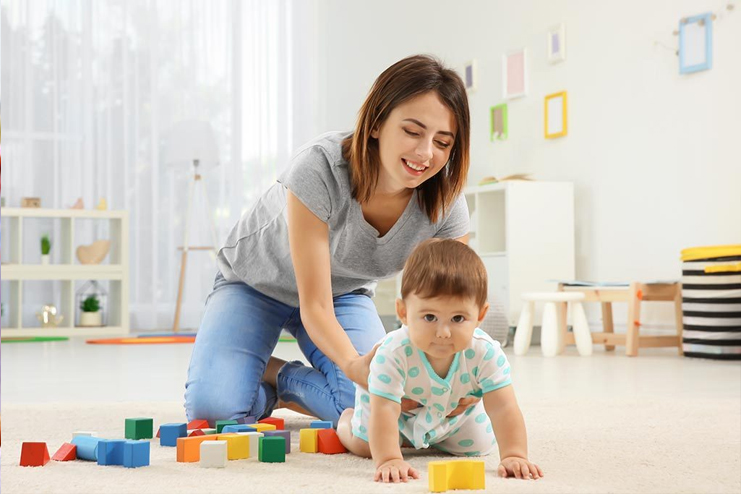
It is most common for the baby to crawl backward first. Some babies use their own techniques and learn to crawl and some babies skip crawling and switch directly to walking. In contrast to the above two cases some babies crawl backwards.
Here are a few ways to help your baby to crawl forward
1. Place the toys in their reach:
This is the best way to teach baby to crawl forward. This is one of the best ways for the baby crawling backwards instead of forward. Place some attractive and colorful toys with in their reach. Allow your baby to catch them. Once they catch them move the toys slowly in the forward direction. This encourages the baby to move in the same direction.
2. Plan some activities and games:
Play some games and activities with your baby. Whenever you find sometime crawl away from your baby and make them to run towards you. This activity makes your baby to realize the importance of using the arms and legs properly and encourages them to crawl forward.
3. Offer more floor time:
Make your baby to have more floor time. Practice is more important whether to make them crawl forward or backward. Encourage your baby to have floor time by placing the toys on the floor. This is the best technique to deal with the baby starting to crawl backwards.
When the babies are ready to use their arms and legs, provide the opportunities that encourage them to have more floor time.
4. Massage your baby’s legs:
Weak muscles are one of the reasons for the babies to crawl backwards. Massage your baby’s legs with the baby oil before the bath time. Massage strengthens the muscles of your baby. It also allows them to have better sleep in the night.
5. Offer ample practice:
Baby’s rely on their muscle memory. That means once they start to learn crawling backwards, they continue to do the same. So offer them some cues to move the legs in the forward direction whenever they had floor time.
6. Use some tempting things:
Use some teething toys and teething biscuits for which your kid has cravings. Place them a little bit out of their reach. This encourages your baby to resist the backward pull and push themselves forward to catch their cravings.
7. Push your baby forward:
Resist the backward movement of your baby and allow them to move in the forward direction. Follow the same routine and make your baby more comfortable with forward crawling.
8. Encourage Tummy time:
Encourage your baby to spend more time on tummy. Make their tummy time more interesting by using some interesting toys and activities. Use some cues to encourage them to move forward.
Things to avoid while your baby is crawling:
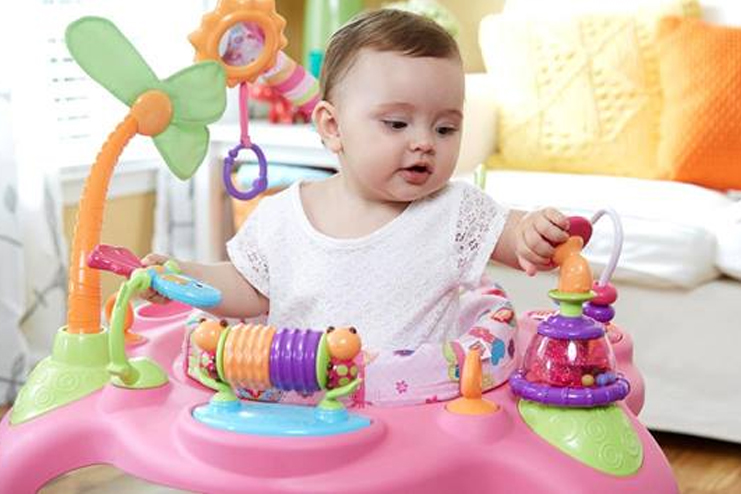
Here are a few things that you should avoid when your baby starts crawling.
1. Baby Walkers:
They are extremely dangerous. They limit the floor time and their ability to crawl. Walkers hinder the growth of the muscles.
2. Don’t allow your baby to spend lot of time in baby seats and carriers:
Don’t use baby seats, strollers, and other baby carriers unnecessarily. Babies are likely to explore the new things and walk earlier when they are allowed to have more floor time.
3. Don’t force your baby to crawl:
Forcing your baby to do something for which they are not ready further slows down the process.
Take Away:
In conclusion, crawling backward is not an issue of concern. Learning to crawl is a major task for the baby. Don’t force the backward crawling baby to crawl in the forward direction. Make your baby figure it out on their own and assist them in promoting the forward crawling.
FAQ’S:
Though the symptoms of autism can be noticed between 12 and 18 months, it is hard to diagnose it before the age of 2 years. Crawling backwards is not exactly the sign of autism. Children with autism exhibit social, communication, and behavioral differences that can not identified before 2 to 3 years of age.

